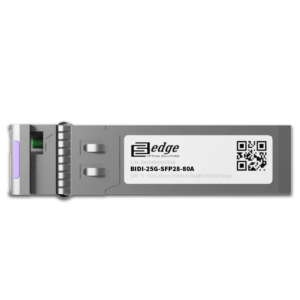
This product enables bi-directional data transmission over a single fibre, reducing the total number of fibers required for a system and achieving lower deployment costs and easier installation. Shipments are scheduled to begin at the end of November 2025.
In recent years, the demand for high-speed, high-bandwidth, high-capacity communication infrastructure has grown significantly due to the increase in mobile network traffic and the rising need for wide-area connections between datacentres.
Accordingly, there has been a demand for even greater communication capacity than that provided by existing 10Gb/s optical transceivers.
However, the introduction of 100Gb/s-class equipment, such as coherent optical communication technology, has presented challenges in terms of implementation costs and operational aspects.
Furthermore, companies engaged in long-distance transmission connecting wide-ranging areas,including regional cities, faced challenges in laying new optical fibre for increased communication capacity and associated operational costs.
Toaddress these challenges, NEC developed the 25G SFP28 80km BiDi, which enables easy upgrades from existing 10Gb/s systems.
The 25G SFP28 80km BiDi optical transceiver enables the following:
1. Achieves long-distance transmission with a high link budget
By combining a high-output laser with a high-sensitivity receiver, NEC has achieved a link budget (Note 1) of 30dB, enabling transmission over
distances of up to 80km. Furthermore, the new transceiver is suitable for large-scale network construction utilizing sections with high fiber loss
or existing dark fiber, enhancing the reliability of wide-area communications.
2. Significantly Reduces Initial Implementation Costs
Using WDM (Wavelength Division Multiplexing) technology with different wavelengths for upstream and downstream, bi-directional transmission over a single fiber has been made possible. This drastically reduces the number of fibers required and lowers overall costs. Furthermore, it eliminates the need for additional relay equipment previously required for extending distances beyond 40km in conventional products. This significantly reduces the burden of infrastructure construction for installation and long-term operational maintenance.
3. Achieves ease of implementation through power-saving design and compatibility with existing equipment
Achieves a power-saving design of 2.5W under industrial temperature conditions (-40 to +85 deg. C.). This represents a reduction of approximately 20% compared to conventional products using optical semiconductor amplifiers, achieving the industry’s highest standard. Furthermore, it can be directly installed in standard SFP ports, enabling smooth implementation utilizing existing equipment.
Product Specifications
Form factor: SFP28
Bitrate: 25.78Gb/s (Ethernet signal)
Wavelength (Uplink): 1289nm
Wavelength (Downlink): 1314nm
Link Budget: 30dB
Optical Interface: 25.78Gb/s (NRZ)
Electrical Interface: 25.78Gb/s (NRZ)
Power consumption: 2.5W (Max.)
Operating temperature: -40 to +85 deg. C.nEC adds to optical transceivers






